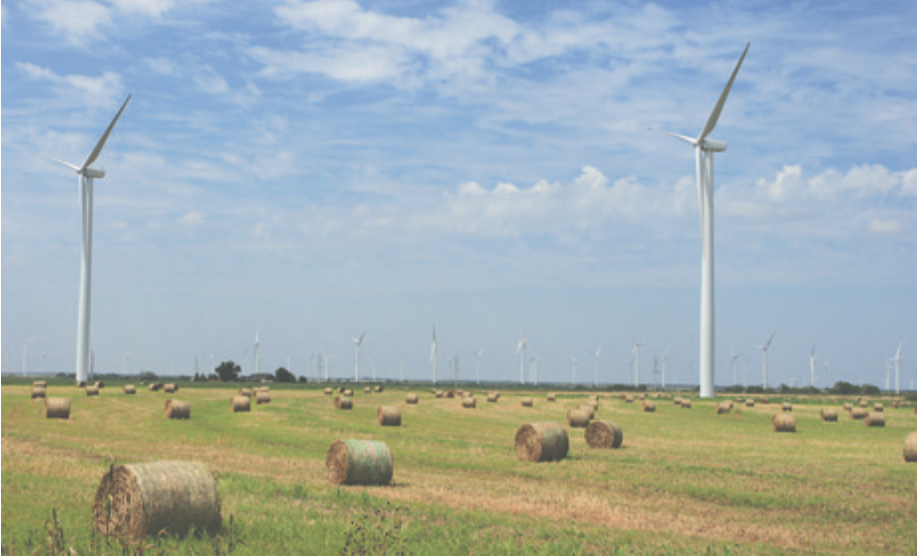Wind Energy Continues Expansion
Texas continues to lead the nation in installed wind capacity and generation. In the first quarter of 2017, Texas had 25 percent of the nation’s installed wind capacity, reaching 21,044 megawatts. Iowa was second in installed wind capacity, at 6,952 megawatts.
With Texas’ significant increase in wind energy, all renewable generation in the state was responsible for 13 percent of total electricity generation in 2016, nearly double what it was in 2011 at 6.9 percent.
| Year | Texas | U.S. |
|---|---|---|
| MW | MW | |
| 2017 (1Q) | 21,044 | 84,183 |
| 2016 | 20,321 | 82,183 |
| 2015 | 14,208 | 66,008 |
| 2014 | 14,098 | 65,879 |
| 2013 | 12,354 | 61,110 |
| 2012 | 10,648 | 49,802 |
| 2011 | 10,394 | 46,919 |
| 2010 | 10,089 | 40,267 |
| 2009 | 9,403 | 34,863 |
| 2008 | 7,427 | 24,651 |
| 2007 | 4,296 | 16,596 |
| 2006 | 2,739 | 11,575 |
| 2005 | 1,995 | 9,149 |
| 2000 | 181 | 2,566 |
By the first quarter of 2017, U.S. installed wind capacity had grown to 84,183 megawatts (MW).
The Texas plains continues to see rapid growth in wind farms, while more recently expansion has began offshore on the Gulf Coast. In all, Texas has four of the ten largest wind generation projects in the country. Roscoe Wind Farm, which stretches across Nolan, Mitchell, Scurry and Fisher counties, is the largest in the state, with a capacity of 782 MW. It is third in the nation to Alta farm in California at 1,548 MW and Shepherds Flat in Oregon at 845 MW.
Wind power is variable and ERCOT historical wind generation data reveals that there is often less wind blowing on summer afternoons that coincide with peak electrical demand. The Electric Reliability Council of Texas (ERCOT), which manages the state’s largest power grid, is responsible for ensuring the reliability and adequacy of the electric grid, it makes capacity calculations to determine if it will have sufficient generating capacity on the grid.
For planning purposes, ERCOT determined that in the future, it can count on just 8.7 percent of its installed wind capacity to alleviate Texas’ peak summer demand. It also notes that conventional generation must be available to meet forecast load and reserve requirements.
Sources: U.S. Department of Energy, the Office of Governor/Economic Development & Tourism, the State Energy Conservation Office, 2017, and other sources.


